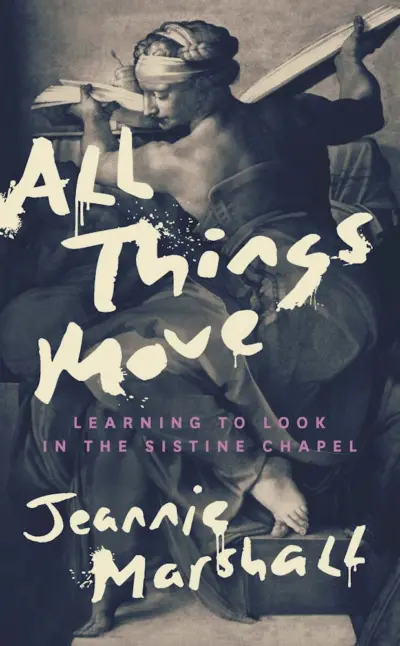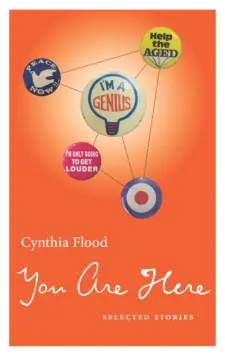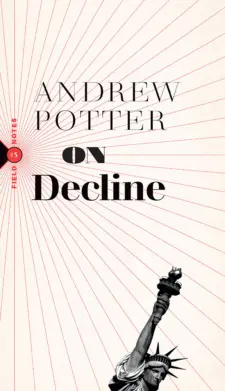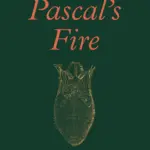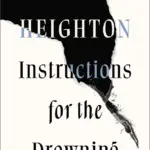Description
Audio PlayerA deeply personal search for meaning in Michelangelo’s frescoes—and an impassioned defence of the role of art in a fractured age.
What do we hope to get out of seeing a famous piece of art? Jeannie Marshall asked that question of herself when she started visiting the Sistine Chapel frescoes. She wanted to understand their meaning and context—but in the process, she also found what she didn’t know she was looking for.
All Things Move: Learning to Look in the Sistine Chapel tells the story of Marshall’s relationship with one of our most cherished artworks. Interwoven with the history of its making and the Rome of today, it’s an exploration of the past in the present, the street in the museum, and the way a work of art can both terrify and alchemize the soul. An impassioned defence of the role of art in a fractured age, All Things Move is a quietly sublime meditation on how our lives can be changed by art, if only we learn to look.
Audiobook read by Fiona Hyatt
Praise for All Things Move
“The Sistine Chapel serves as inspiration and structure for this deeply contemplative account about life, family, art, and appreciation.”
—New York Times
“In the era of the perpetual scroll, art still asks us to stop and look, long and slowly. All Things Move is a rich vindication of one writer’s decision to do just that.”
—Globe and Mail
“Rich, meditative . . . The book is part art history, part memoir; a case for slowing down, curiosity, a closer look.”
—Keziah Weir, Vanity Fair
“[Marshall’s] aim—appropriate to the spirit of Renaissance humanism that inspired the frescoes—becomes one of pulling out the human stories beneath their biblical veneer, and her observations on this front are often disarmingly simple, lovely and intelligent.”
—Emily Donaldson, Globe and Mail
“Marshall’s book is a meditation on how lives can be changed by art.”
—Toronto Star
“Jeannie Marshall examines how art can transform our lives . . . Marshall may not be an art historian, but she nonetheless elegantly sets the Sistine Chapel in historical context.”
—CBC Ideas
“Part meditation, part cultural criticism, part therapy, All Things Move captures the complex range of emotions that art can sometimes elicit in us, as well as the questions that may arise as a consequence.”
—Literary Review of Canada
“Elegantly voiced . . . [Marshall’s] declaration of a point of view, that sense of personal experience in the face of great art and especially the right to have personal experience in the face of great art, proves to be as worthy a subject as the Sistine Chapel itself.”
—Washington Post
“In case you have a sense of wanderlust but aren’t able to indulge it yourself, Marshall’s book . . . is a meditation on how lives can be changed by art; and guides us through how she learned how to truly see Michelangelo’s work, and what it has to tell us about life and art.”
—Toronto Star
“All Things Move is an extended essay on how we experience art . . . evocative and illuminating, a moving meditation on the human impulse both to create art and to experience its power.”
—Winnipeg Free Press
“Part memoir, part art theory, and all manner of exploration: All Things is an essay in the greatest sense of the word, a meaningful attempt to get to the very heart of why art matters.”
—The Tyee
“‘Great Art’ can often have a highbrow, inaccessible aura, but Marshall’s individual approach to the Sistine Chapel makes it so compelling.”
—McGill Tribune
“All Things Move: Learning to Look at the Sistine Chapel . . . makes a unique case for considering the Chapel as something other than a religious enclave, scholarly artifact, or checklist tourist attraction. It’s all those, of course, but its otherworldly qualities transcend religious, academic, or tour-bus affiliations.”
—Canadian Architect
“Marshall does not set up her unbelief as a barrier to encounter. Rather, she allows herself to be addressed by the paintings. She opens herself to them . . . Marshall is as much seeker as skeptic.”
—Commonweal Magazine
“Informative, insightful, perceptive, thought-provoking, and exceptionally ‘reader friendly’ in organization and presentation, All Things Move: Learning to Look in the Sistine Chapel is unreservedly recommended.”
—Midwest Book Review
“A sublime meditation on the Sistine Chapel.”
—The National Catholic Register
“Jeannie Marshall’s All Things Move: Learning to Look in the Sistine Chapel brings Michelangelo’s frescoes into exacting view, considering not only the details of the images and context of their making, but their ongoing situatedness in human history.”
—Ploughshares
“Jeannie Marshall offers a meditation on the timeless values and personal meanings in both art and religion. Full of insights into everyone from Michelangelo and Martin Luther to Barnett Newman, All Things Move is a celebration of the power of art to make us see, feel and think.”
—Ross King, author of Michelangelo and the Pope’s Ceiling
“All Things Move is not just another book, written in clear and lively sentences that anyone will want to read, detailing the history and creation of one of the greatest works of art known to mankind. It’s a book that actually operates in the opposite direction—a book about how we experience that work of art, and why the experience is so unforgettable. Michelangelo made a great and lasting work of art that changed history. But in Marshall’s gifted hands, our experience of it becomes an adventure and a work of art in its own right. This is a book about discovery, unlike anything you have read before.”
—Ian Brown, author of Sixty
“In the manner of the late W. G. Sebald, who shattered sundry barriers in his writing, Jeannie Marshall has produced a prose poem, a deeply personal, multi-layered, and thoroughly captivating meditation on art, spirituality, and life. I was both moved and enchanted.”
—Modris Eksteins, author of Solar Dance
“A testament to quiet patience, and what we gain when we let go of preconceptions of how we are supposed to interact with an artwork of any medium or discipline.”
—Quill & Quire
“Jeannie Marshall’s book All Things Move addresses the splendor of the iconic Sistine Chapel from personal and universal perspectives . . . an all-encompassing intimate tour of the Sistine Chapel’s extraordinary wonders”
—Foreword Reviews
Praise for Jeannie Marshall
“Marshall’s clear, direct book ably captures the frustrations of trying to find the healthiest path and inspiring kids to do the same.”
—Kirkus Reviews
“Marshall . . . writes passionately about the dangers posed by processed foods—not just to our children’s health but to our way of life, our human attachment to the ‘ordinary happiness’ of meals cooked at home from real foods.”
—Boston Globe
“Engaging . . . admirably well-researched . . . a well-timed eye-opener.”
—Chris Nuttal-Smith, Globe and Mail
“Outside the Box is about teaching kids how to appreciate real food but also about how globalization is changing the way the world eats. In this beautifully written book about what needs to be done to preserve food culture in Italy and elsewhere, Marshall makes the political personal as she explains how she is teaching her son to enjoy the pleasures of eating food prepared, cooked and lovingly shared by friends and family.”
—Marion Nestle, author of Food Politics

